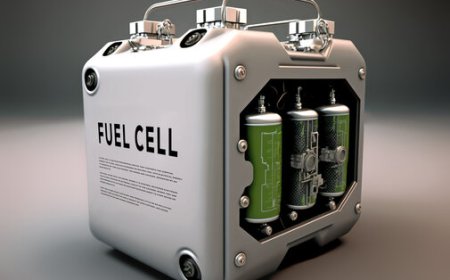Milk Revolution In India
The milk revolution in India, led by Verghese Kurien, transformed the nation into the world’s largest milk producer, ensuring food security and rural empowerment.

Indias journey from being a milk-deficient country to becoming the worlds largest milk producer is one of the most remarkable success stories in agricultural and rural development. This transformation is popularly known as the Milk Revolution in India, largely attributed to a visionary initiative called the White Revolution, or Operation Flood. Spearheaded by Dr. Verghese Kurien and the National Dairy Development Board (NDDB), the revolution not only increased milk production but also revolutionized the rural economy and empowered millions of small-scale dairy farmers across the nation.
This blog delves deep into the history, phases, key players, objectives, and the impact of the Milk Revolution in India, while also highlighting its relevance in todays context.
? What is the Milk Revolution in India?
The Milk Revolution in India refers to the strategic movement launched in the 1970s to increase milk production, reduce dependence on imports, and empower rural farmers. At a time when India was struggling with food security, including the supply of milk and dairy products, this movement laid the foundation for self-sufficiency in dairy and helped establish India as a dairy superpower.
The revolution was powered by Operation Flood, which became the worlds largest dairy development program, connecting rural milk producers with urban markets and creating a national milk grid.
?? Key Aspects of the White Revolution (Operation Flood)
? Objective:
The central goal of the White Revolution was:
-
To boost milk production across India
-
To eliminate middlemen, ensuring better prices for farmers
-
To provide fair access to consumers with hygienic milk at affordable rates
-
To create a self-sustaining dairy industry
? Phases of Operation Flood:
The program was executed in three distinct phases over nearly three decades:
-
Phase I (1970-1980)
-
Funded by the sale of donated skimmed milk powder and butter oil from the European Economic Community.
-
Established 18 milk sheds and linked them to four metro citiesDelhi, Mumbai, Kolkata, and Chennai.
-
Created the base for rural-urban milk supply chains.
-
-
Phase II (1981-1985)
-
Expanded to 136 milk sheds, covering over 290 districts.
-
Introduced veterinary services, feed supply, artificial insemination, and training for farmers.
-
Strengthened cooperative institutions and cold storage infrastructure.
-
-
Phase III (1985-1996)
-
Aimed to consolidate the dairy infrastructure developed in the earlier phases.
-
Encouraged the financial sustainability of milk unions.
-
Enhanced womens participation and brought new regions into the fold.
-
??? Dr. Verghese Kurien: The Architect of the Revolution
Known as the Father of the White Revolution, Dr. Verghese Kurien played a monumental role in designing and leading the Milk Revolution in India. He believed in the power of cooperatives and understood that true empowerment lay in enabling rural farmers to own and manage the means of production and distribution.
His model was simple but revolutionary: Production by the masses, not mass production.
Dr. Kuriens leadership through the NDDB and institutions like AMUL (Anand Milk Union Limited) helped spread the success of dairy cooperatives across the country. Today, AMUL is not just a household name but a symbol of rural empowerment and Indias dairy legacy.
? Impact of the Milk Revolution
The outcomes of the White Revolutionand hence the Milk Revolution in Indiahave been truly transformative:
? 1. India Became the Worlds Largest Milk Producer
From importing milk powder to producing over 220 million tonnes of milk annually, India surpassed the USA and became a global leader in dairy production.
??? 2. Empowerment of Rural Farmers
Millions of small and marginal farmers were brought into the cooperative framework, enabling them to earn steady incomes. Dairy became a secondary source of income for farmers, especially during crop failure.
??? 3. Womens Participation Increased
Women played a critical role in animal care and milk production. Through SHGs and dairy cooperatives, they gained financial independence and decision-making power in households.
? 4. Development of a National Milk Grid
A robust cold chain network and dairy processing plants were built across India. Milk could now flow from villages to cities without spoilage.
? 5. Nutritional Security
Increased milk availability meant better nutrition for children and vulnerable populations. Milk, rich in protein and calcium, became accessible to even the poorest families.
? National Milk Day Honoring a Legend
Every year, November 26th is celebrated as National Milk Day in India. This date marks the birth anniversary of Dr. Verghese Kurien, commemorating his invaluable contribution to the dairy industry and rural development. It serves as a reminder of how one visionary can change the course of a nation.
? The Future: Towards a White Revolution 2.0
While the original Milk Revolution succeeded in solving Indias milk shortage, todays challenges are more complex and call for a White Revolution 2.0. The focus now needs to shift toward:
-
Improving per-animal productivity
-
Sustainable and climate-resilient dairy practices
-
Digitization and smart dairy technology
-
Better fodder management and veterinary care
-
Export readiness and value-added products
Technologies like IoT, AI, and blockchain are already being piloted in dairy supply chains, empowering farmers with data-driven insights and enhancing quality assurance.
? Role of Government and Institutions
The Government of India, along with NDDB and state milk federations, continues to play an active role in expanding and modernizing the dairy industry. Key initiatives include:
-
Rashtriya Gokul Mission for breed improvement
-
National Dairy Plan for infrastructure development
-
Animal Husbandry Infrastructure Development Fund for private investment in dairy
These efforts are ensuring that the legacy of the White Revolution remains alive while adapting to new-age needs.
? Global Lessons from Indias Milk Revolution
Indias dairy model has inspired several developing countries across Asia and Africa. The emphasis on community-based production, decentralized processing, and fair pricing has become a template for rural empowerment worldwide.
The Milk Revolution in India is not just a tale of higher milk outputit is a story of social justice, equity, and nation-building.
? Conclusion
The Milk Revolution in India, led by the White Revolution, is one of the most defining chapters in the countrys development narrative. It showcases the power of vision, leadership, and collective effort in transforming a struggling sector into a pillar of national strength.
From a country once dependent on milk imports, India today not only fulfills its own needs but is setting global benchmarks in dairy production and cooperative success.
As India strides into the future, the lessons of the past continue to guide the wayproving that revolutions dont always happen on battlefields. Sometimes, they begin in the humble dairy farms of a rural village.





























